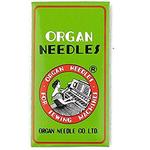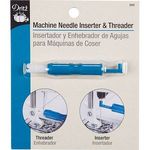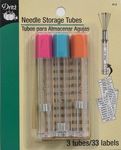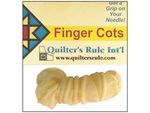Blind Hem Stitch Curved Needles for Portable or Table Model BlindStitch Sewing Machines |
How often should I replace my sewing needles? Machine needles should be replaced after a maximum sewing time of 8 hours. Replace needles more frequently when sewing synthetic fabric, appliqués or machine embroidery. This will avoid skipped stitches, fabric pulls and frayed threads. Machine needles are designed to break or shear off for the protection of the sewing machine hook mechanism, bobbin case, presser foot, or needle plate. If a needle bends or burrs, do not sew with it. When a machine needle breaks, it is a warning to check the following: ~The needle type and size is correct? ~Is the thread too thick or unsuitable for the needle size and application? ~Is the upper thread feeding freely? ~Are the thread tensions set too tight? ~Does the machine need cleaning? ~Is the correct presser foot fitted? ~Is the correct sewing technique being used? ~Is the fabric being pulled, pushed or dragged during sewing? ~Twin needles usually break due to excessive heat build up. Reduce speeds and avoid prolonged usage.
Thread breakage can be caused by resistance of thread going through the needle eye/size. A good rule of thumb is that thread should not take up more than 1/2 the space of or in the needle eye depending on thread texture. Thread a needle in your hand and let the needle slide down over the length of the thread. If there is too much resistance, it may show up as broken thread due to heat built up in higher speed sewing and/or just restriction and resistance in the needle eye which can cause thread to shred and break. There can be many more reasons for thread shredding and breaking, other than just matching correct needle eye size to thread size.












